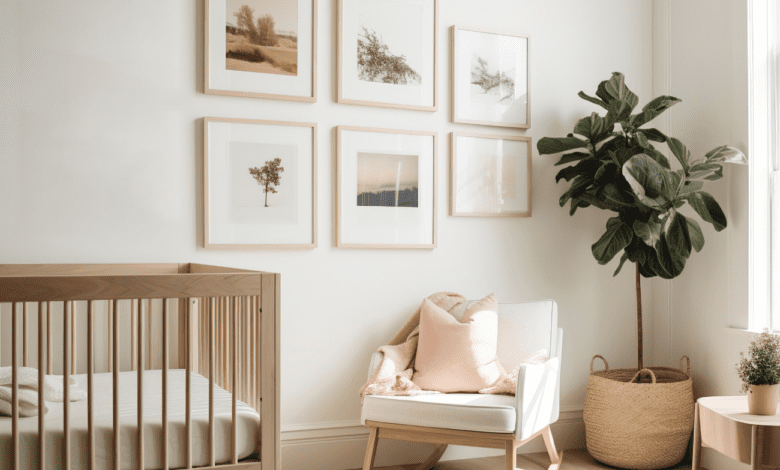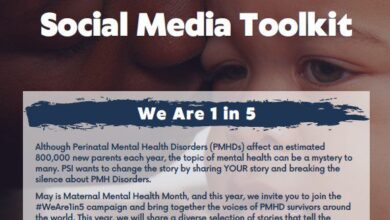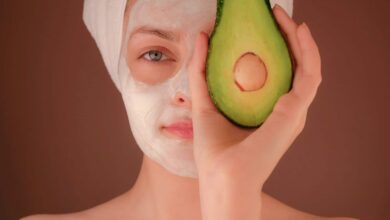8 Tips for Creating a Healthy and Non-Toxic Nursery for Baby

If you’re hoping to create a non-toxic nursery to bring your bundle of joy home to, these tips are a must read (especially number two – who knew?!).
You will spend most of your time with your baby in your nursery, so it should be a safe and healthy place for both of you. In addition, you should consider how the space will evolve as your baby grows.
Here are some great tips for building a nursery that is as healthy, practical, and non-toxic as possible.
At a glance non-toxic nursery tips:
- Use non-toxic paint
- Opt for safe flooring and floor coverings
- Choose practical furniture
- Choose the right colors
- Keep the air clean
- Control the lighting
- Use non-toxic baby products
- Choose a chemical-free mattress
Tips for creating your non-toxic nursery
1. Use non-toxic paint
Painting is often the first thing parents do when creating their nursery. As you choose your color palette, look for paints that do not contain volatile organic compounds (VOCs).
These are gases that can harm your health and causes symptoms such as dizziness, headache, nausea, fatigue, and more.
Even though you see cute scenes in movies where the pregnant mother paints the nursery, that not advisable in real life. Even paints labeled “VOC-free” may contain trace amounts, so it’s better to err on the side of caution.
Have someone you trust paint your nursery in your chosen color. Ideally, they should do it months before the baby came.
Companies with non-toxic or no VOC nursery paint include:
2. Opt for safe flooring and floor coverings (like rugs!)
As your baby learns to crawl and walk, they will spend a lot of time on the floor. Your The choice of floor is very important to keep your baby healthy.
Kids will always mess up — it’s part of growing up. For this reason, try avoid using carpets for your nursery. They can be a breeding ground for bacteria, as cleaning the areas is complicated.
Also, your baby can be exposed to VOCs (yes, like from paint) from glue and carpet treatment.
Of course, you want your baby to have a soft place to crawl and play. Ideally, choose a washable, non-toxic rug. It will be easier clean up stains and dirt to keep your baby safe from bacteria and other harmful substances.
3. Choose practical furniture
Babies grow pretty fast. Before you know it, they’re taking their first steps. Time can fly with your little one, so should you be ready to change your nursery to meet their needs at every stage.
A great way to do that is through interchangeable tools. Your baby won’t need a crib for long, so invest in cribs that convert to a toddler bed. There are those who have adjustable mattress rail and height to help your child as they grow.
Another practical piece of furniture you can invest in is a replaceable change table. Once your baby is potty trained, you can take the top part off and use the rest of the bottom part as storage.
When you choose furniture, make sure its paint or finish is VOC free. Children can and will bite surfaces, so everything should be non-toxic.
Pro tip: Secure all furniture in your nursery and, ideally, your home. Tip-over accidents happen, so anchoring your furniture is essential. These include closets, dressers, changing tables, televisions, and more.
A simple anchoring kit (pack of ten here) and a few extra minutes will help put your mind at ease and help ensure your baby’s safety.
4. Choose the right colors
Choosing colors for your nursery is about more than aesthetics — according to color theory, different shades can affect you and your baby psychologically.
Some are calming, while others are more uplifting. For example, colors of blue and green helps sleep. Meanwhile, bright yellow and orange can help boost mood and promote creativity.
You can incorporate colors into your nursery with paint, wallpaper, furniture, and curtains.
However, remember that choose more soothing tones. You may not notice how subtle the effects of the paint are, but you will experience it the moment you step into your baby’s calming blue nursery at night.
5. Keep the air clean
Believe it or not, Indoor air may be more polluted than outdoor air, even in industrialized cities. If you cannot properly ventilate an indoor space, pollutants can remain trapped in the air you breathe.
Since you spend a lot of time with your baby in your nursery, you should focus on keeping the air clean. That way, you can protect yourself and your child from bacteria, mold spores, dirt, and other pollutants.
Periodically ventilate your nursery by opening doors and windows. Let fresh air in and dirty air out for a few hours. You can also keep the air in your nursery cleaner by using a air purifier with HEPA filter.
Don’t forget that order additional filters and move them when they are too dirty.
6. Control the lighting
The lighting in your nursery can benefit your baby’s health. In the morning, let in the natural light. Doing so will help regulate your child’s circadian rhythm and promote sleep at night.
However, don’t let it harmful UV rays hit your baby directly. Keep the crib out of direct sunlight, and invest in some nice curtains. Use sheer curtains to soften the sun’s rays during the day and the blackouts when it’s time for an afternoon nap.
Install some high quality night lights for when your little one cries in the middle of the night. Get one with a dimmer so you can see where you’re going without startling your child with a flashy, bright light.
7. Choose non-toxic and organic baby products
Unfortunately, we now know how harmful some popular baby products can be. If you’re aiming to create a non-toxic nursery, don’t overlook this critical part.
Brands that make high-quality, non-toxic baby care products like lotions, soaps, diaper creams, and more include:
Opting for non-toxic baby care products can help limit the total number of toxic chemicals absorbed into your baby’s skin, and every little effort helps.
8. Choose a chemical-free mattress
The more you learn about baby mattresses, the better you will understand why it is important to choose one free of harmful chemicals. Harmful chemicals like flame retardants and VOCs can be inhaled by your baby, and mattresses are likely to more hypoallergenicbreathable, and environmentally friendly.
Companies like it Newton and Babylhere make good choices for chemical-free and organic baby mattresses.

Create the perfect space for you and your baby
Your baby’s nursery is where your journey as a parent begins. This space you share with your child will hold many memories of their early years. Creating a healthy nursery will help your baby grow into a safe environment.
Meanwhile, the labor practical options can help you cope with the fast-moving changes during your child’s baby and toddler years, and knowing that your baby’s nursery is as non-toxic as possible will help.
Other nursery and baby related articles
Article references
The Inside Story: A Guide to Indoor Air Quality | US EPA, www.epa.gov/indoor-air-quality-iaq/inside-story-guide-indoor-air-quality. Accessed on Oct. 29, 2023.
Levinojonesmedicalinteriors. “Color Theory for Medical and Health Care Offices.” Levino Jones Medical Interiors24 Feb 2023, www.levinojones.com/blog/facility-color-theory/.
Lu, Chang, et al. “Furniture and Television Tip-over Injuries in Children Treated in United States Emergency Departments – Injury Epidemiology.” BioMed CentralBioMed Central, 27 Aug. 2021, injepijournal.biomedcentral.com/articles/10.1186/s40621-021-00346-6.
Reports, Special. “J&J Knew For Decades That Asbestos Hiding In Its Baby Powder.” ReutersThomson Reuters, 14 Dec. 2018, www.reuters.com/investigates/special-report/johnsonandjohnson-cancer/.
Effect of Volatile Organic Compounds on Indoor Air Quality, www.epa.gov/indoor-air-quality-iaq/volatile-organic-compounds-impact-indoor-air-quality. Accessed on Oct. 29, 2023.






